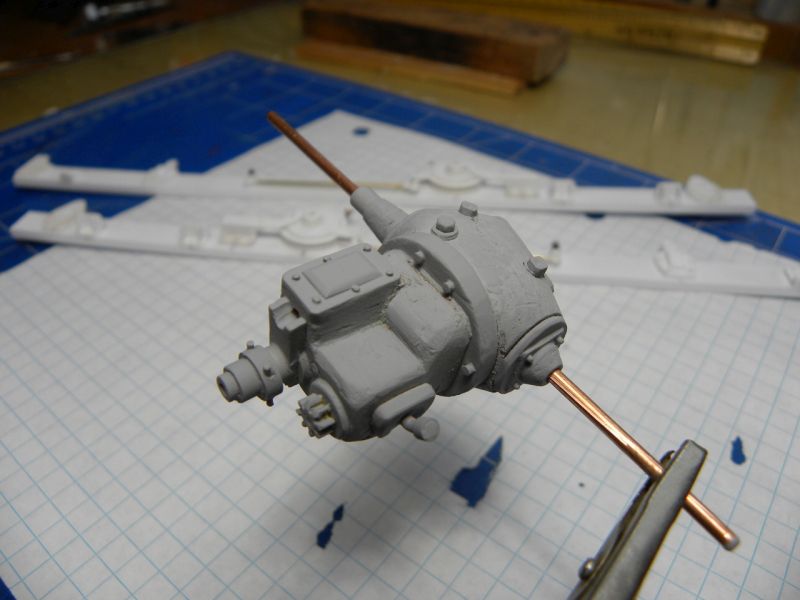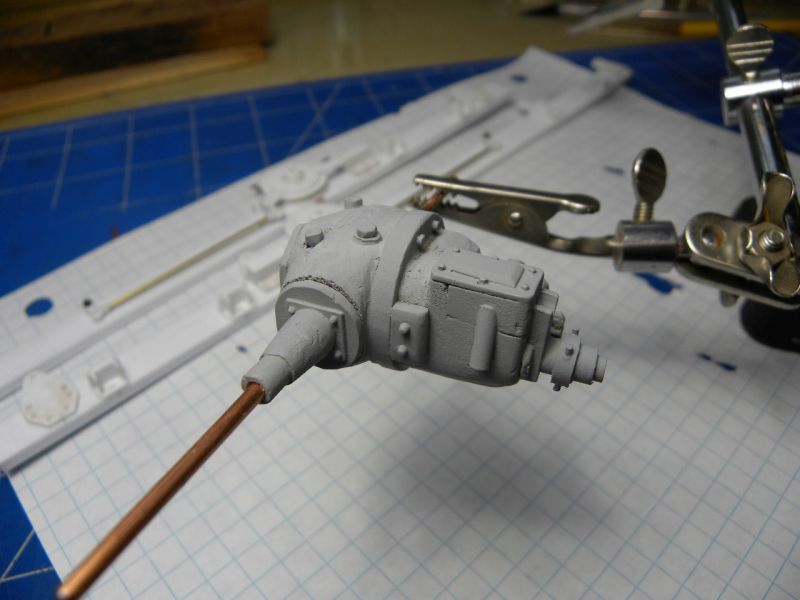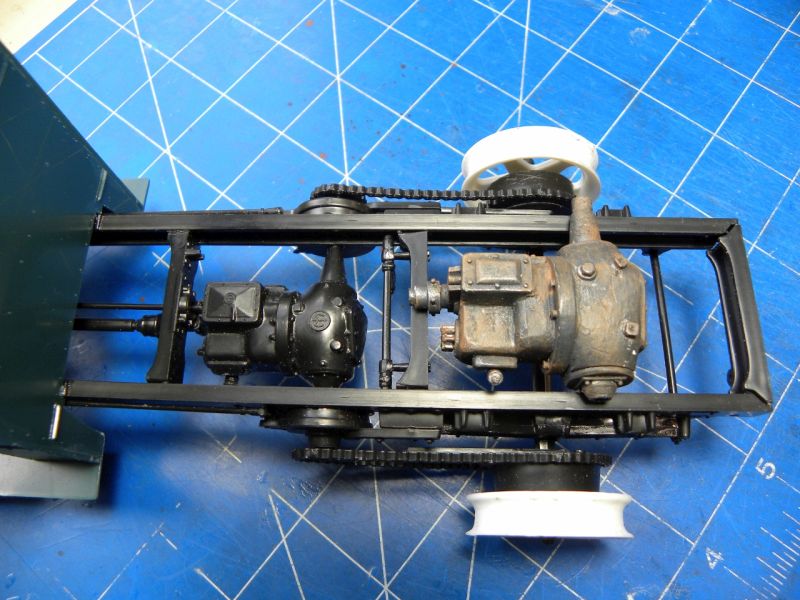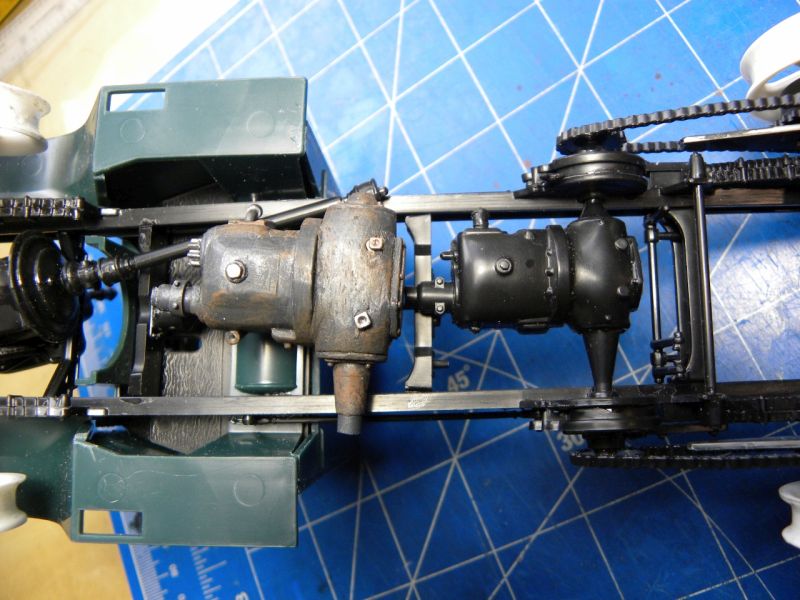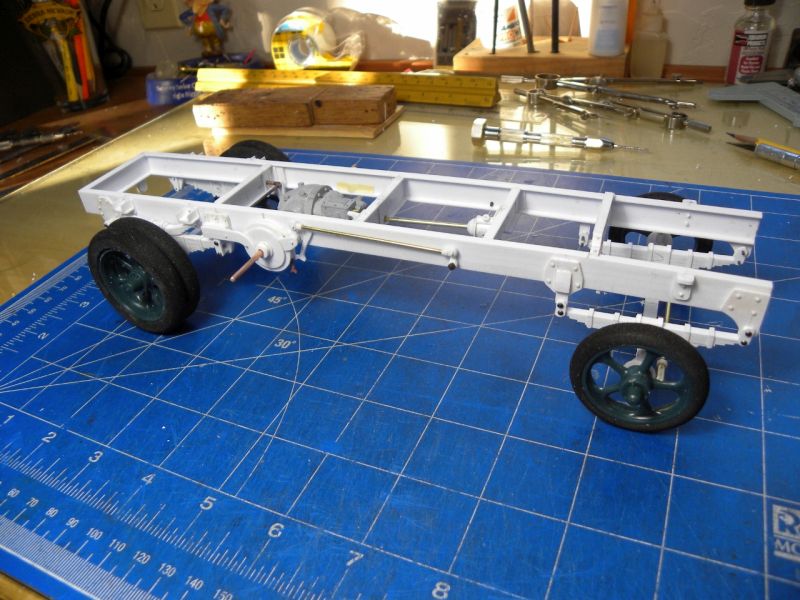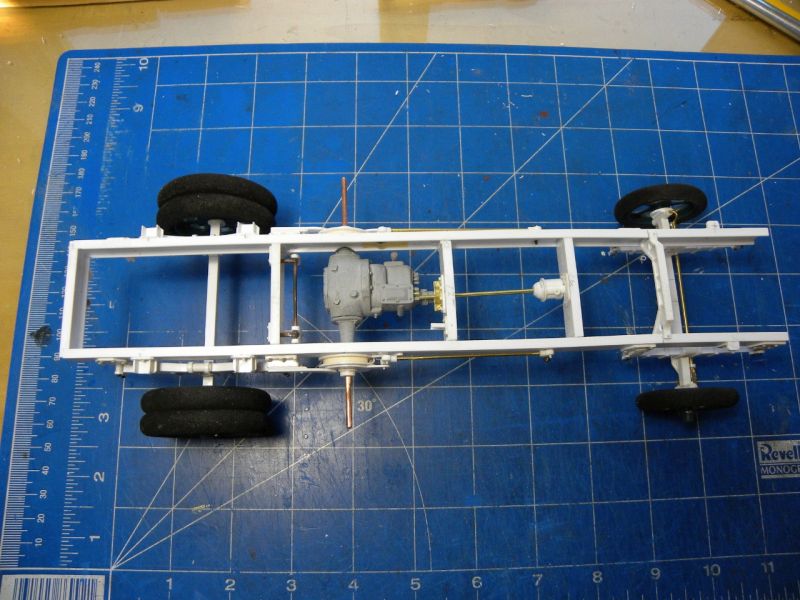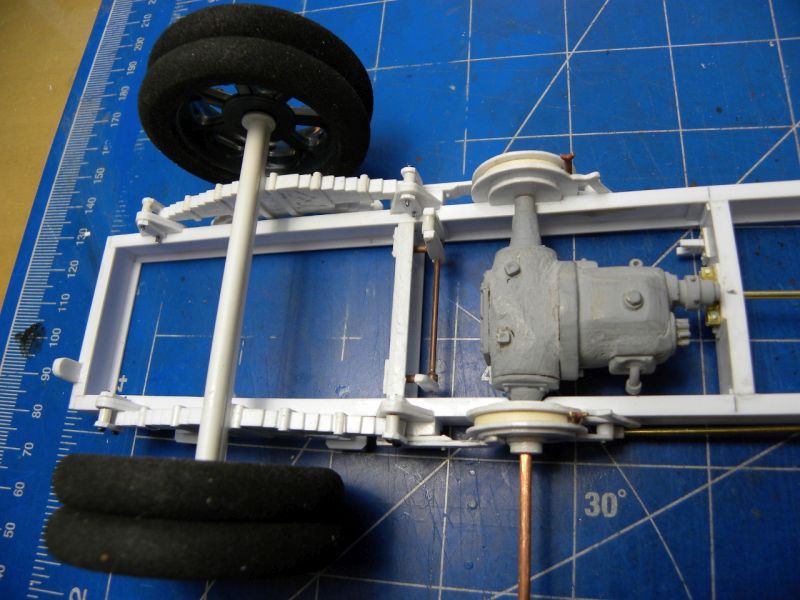Well this winter has been really wet and cold and I haven’t had much in the way of comfortable outdoor days to work on the rail road so I needed something to keep me busy inside.
I have had this kit tucked away for years because I really love the old Mack AC “bulldog” trucks. Unfortunately it is in 1:24 and I build everything in 1:20 scale but I have always had some vague idea of using it as a pattern to build from.
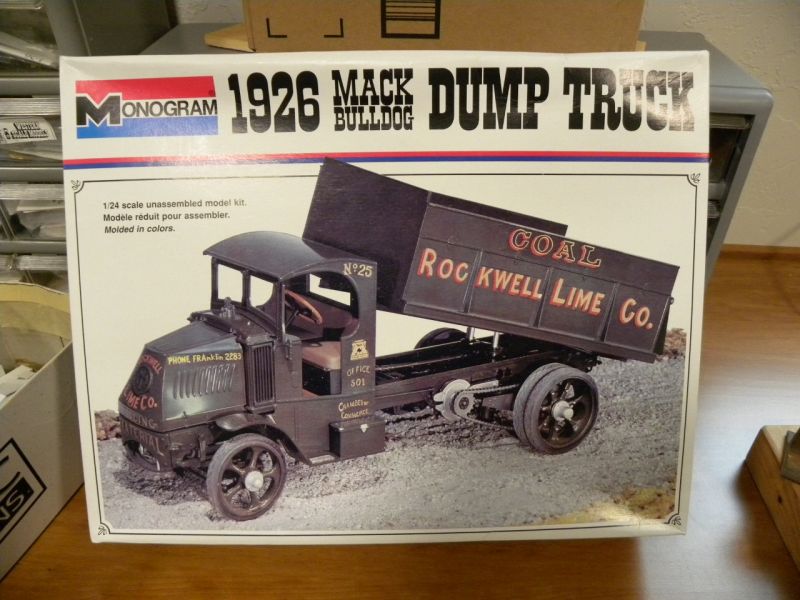
The second piece of the puzzle, so to speak, comes from an article in a 1983 edition of Timberbeast magazine describing the log loaders built by the McVay machine shop in Klamath Falls, Oregon. The article contained a scale drawing of one of the surviving (more or less) machines in Collier State Park, Chiloquin, OR.
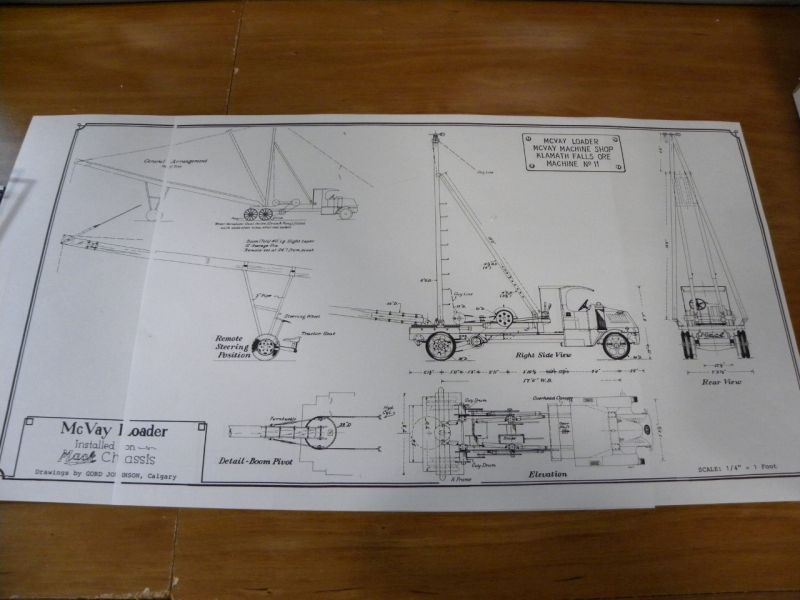
A brief history.
The McVay loaders were very popular in the Southern Oregon, Northern California pine forests from the early 1930’s to the late 1950’s. This is in the era that was swiftly moving away from railroad logging and turning to truck hauling for logs. During that time some 50 plus units were built by this little 2 man shop and sold to loggers all over the area. These units were very popular with the Gyppo loggers, sorry if you find the term offensive, but that is the common usage term for small independent, usually broke, logging contractors in this part of the country.
The early units were all built on the Mack AC “Bulldog” trucks but later as the Mack’s became more difficult to obtain the loaders were mounted on other brands of trucks. These loading units were cheap to buy, easy to transport, and quick to set up in the woods making them ideal for the small operator.
My research has only turned up three of these units still in existence;
Roots of Motive power, Willets, CA has a 1934 Mack with the McVay loader Construction #3. This unit is basically a pile of scrap.
Collier Logging Museum, Chiloquin, Oregon has a Mack chassis with McVay Loader construction #11 mounted on it but the Mack has been bastardized at some time in the past by adding a Ford flat head engine and Ford cab.
Trail, Oregon Museum has a 1913 Mack with McVay Loader construction #10, This loader I have not seen yet but as soon as we get a few days of warm weather I will be over there measuring and taking pictures.
On to the build.
Before starting the loader I have to build the whole truck. I used the Monogram kit as a set of blue prints and measured each piece and scaled it up to 1:20 then built it. Keeping in mind each sub assembly has to be readily removable for painting then re-assembly. This actually turned into a much larger and more difficult project than I had anticipated.
Here we have the main frame side rails and cross members all built up from Styrene shapes. As you can see the truck is over 11 inches long. ha big surprise coming later about that.
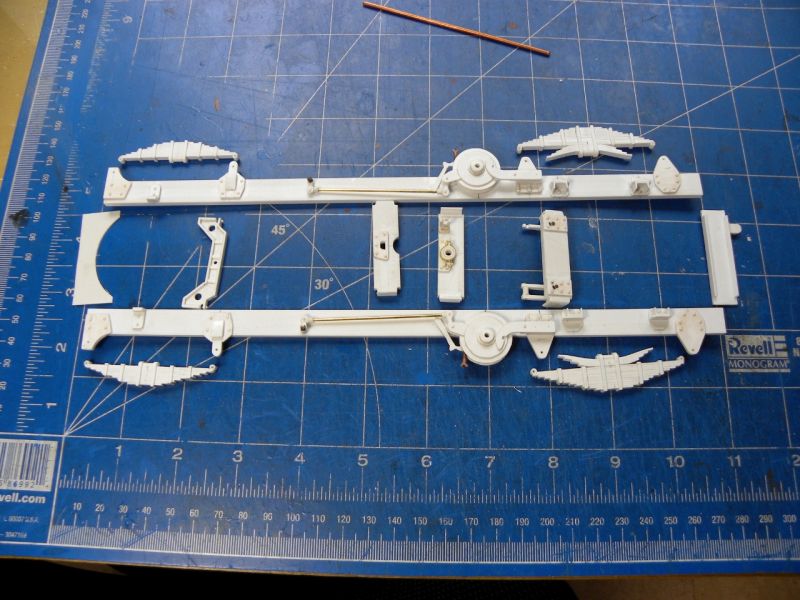
Well enough for this evening.
Thanks for taking a look
Rick
